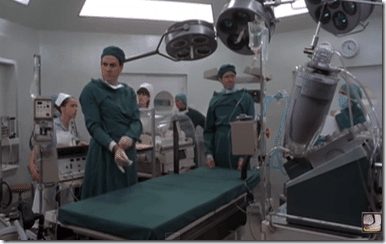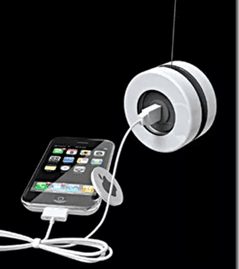Originally posted on July 26, 2015 @ 12:21 PM
Safety for Luddites
 I often receive marketing for safety products and get astounded at the way ‘dumb down safety’ is seduced by technology. Often the assumption is that if we collect data on an iPad somehow safety is better. Or, if we use GPS or some kind of new technological product somehow we are improving safety? It’s fascinating to read the marketing that accompanies these new products often without any thought of their by-products or trade offs. It’s just assumed that spending an inordinate amount of money on a technology makes one safer. It’s so easy to be seduced by a gadget and be terrible at the basics.
I often receive marketing for safety products and get astounded at the way ‘dumb down safety’ is seduced by technology. Often the assumption is that if we collect data on an iPad somehow safety is better. Or, if we use GPS or some kind of new technological product somehow we are improving safety? It’s fascinating to read the marketing that accompanies these new products often without any thought of their by-products or trade offs. It’s just assumed that spending an inordinate amount of money on a technology makes one safer. It’s so easy to be seduced by a gadget and be terrible at the basics.
 The remarkable thing about the seduction of technologies is the yo-yo value. When we were kids the yo-yo fad was as reliable as clockwork. Just wait for Coca Cola to get the marketing machine working and soon enough yo-yos were back in fashion. Monty Python really took this apart in their skit from The Meaning of Life on the machine that goes ‘bing’ (https://www.youtube.com/watch?v=NcHdF1eHhgc ). The seduction of technologies is their distraction, bells and whistles which in themselves don’t mysteriously make an activity ‘better’. If there is a claim to make things ‘better’, I wonder if the sales pitch clarifies what that actually means. We need to go back to the meaning and purpose of what we are doing and if the technology doesn’t improve what we do, then it’s just a yo-yo. Just because we have a machine that goes ‘bing’ doesn’t mean humans are more valued.
The remarkable thing about the seduction of technologies is the yo-yo value. When we were kids the yo-yo fad was as reliable as clockwork. Just wait for Coca Cola to get the marketing machine working and soon enough yo-yos were back in fashion. Monty Python really took this apart in their skit from The Meaning of Life on the machine that goes ‘bing’ (https://www.youtube.com/watch?v=NcHdF1eHhgc ). The seduction of technologies is their distraction, bells and whistles which in themselves don’t mysteriously make an activity ‘better’. If there is a claim to make things ‘better’, I wonder if the sales pitch clarifies what that actually means. We need to go back to the meaning and purpose of what we are doing and if the technology doesn’t improve what we do, then it’s just a yo-yo. Just because we have a machine that goes ‘bing’ doesn’t mean humans are more valued.
One of the things that keeps me most busy most days is working with organisations on the fundamentals of risk and safety ie. engaging, listening and conversing with others. These are the basics, human skills are what risk and safety is all about. Human skills are probably the most neglected competency in safety training and qualifications. It’s astounding that many people in safety are brilliant at checklists, fantastic at memorizing regulations but poor at observations and conversations. Many don’t even know what they are looking and listening for when they go out for a walk and chat. Many safety people I encounter think safety is about looking for hazards, correcting PPE and collecting data. Many have never seen or even read the Handbook to the Risk Management Standard (AS/NZS ISO 31000) HB327 Communicating and Collaborating About Risk.
I spoke at a conference recently with 100% safety managers (all male) in the audience and the final presenter before lunch showed off an iPad app, simply an electronic data base. The interface of the app was just a data base, tables and fields to fill in. As I went to the table for lunch I couldn’t believe the number of blokes who had flocked about the machine, while their lunch went cold they flocked about like seagulls, mesmerized and seduced by the machine that went ‘bing’. A small group stood around the tables of food and chatted about what was happening in their organisations about tackling risk and safety.
When we help people develop their conversations and observations skills in our training we suggest that the best thing to take on a risk and safety walk is nothing – no checklists, no paper, no iPhone and no gadgets.
So before you start spending lots of money on a machine that goes ‘bing’ here are a few questions and tips about the basics.
1. What is the foundational role of a safety walk/observation?
2. In a conversation do you know how to suspend agenda and listen?
3. What is your risk iCue?
4. Do you know what to look for and listen for in risk?
5. Do you think a safety walk is about hazards?
6. Do you need a list to tell you how and what to observe and listen?
7. What is the agenda/bias of the source that designed the list anyway?
8. What things can possibly distract you from ‘attending’ (http://www.thecounsellorsguide.co.uk/attending-skills.html) to the people you encounter?
9. Have you a clear strategy on getting the basics and fundamentals right before looking to gadgets?
10. What kind of gadgets are being marketed to you and is their value to humans demonstrable?
Risk and safety is fundamentally about human activity, not data accumulation, counting and information. If your organization hasn’t got the basics right of engaging with people then save your money, they will simply amplify the inadequacy of the basics. Things might look great but nothing will improve.



Brent Charlton says
That shitty paper form transferred to an iPad is just a shitty electronic form.
Rob Long says
Yet the industry thinks that a form on an ipad is not more paperwork.